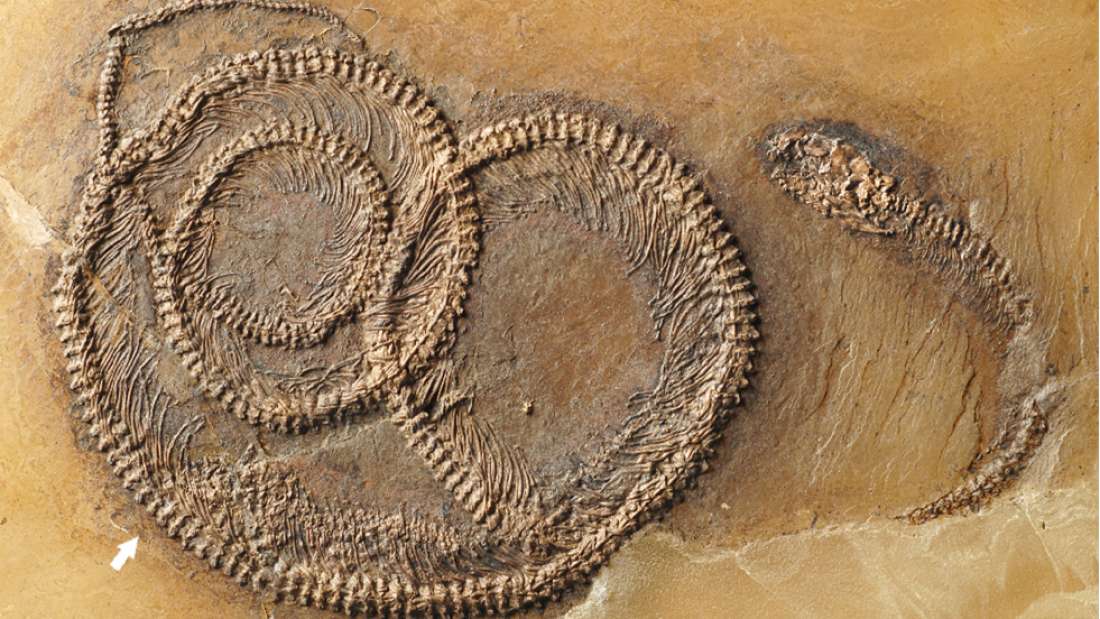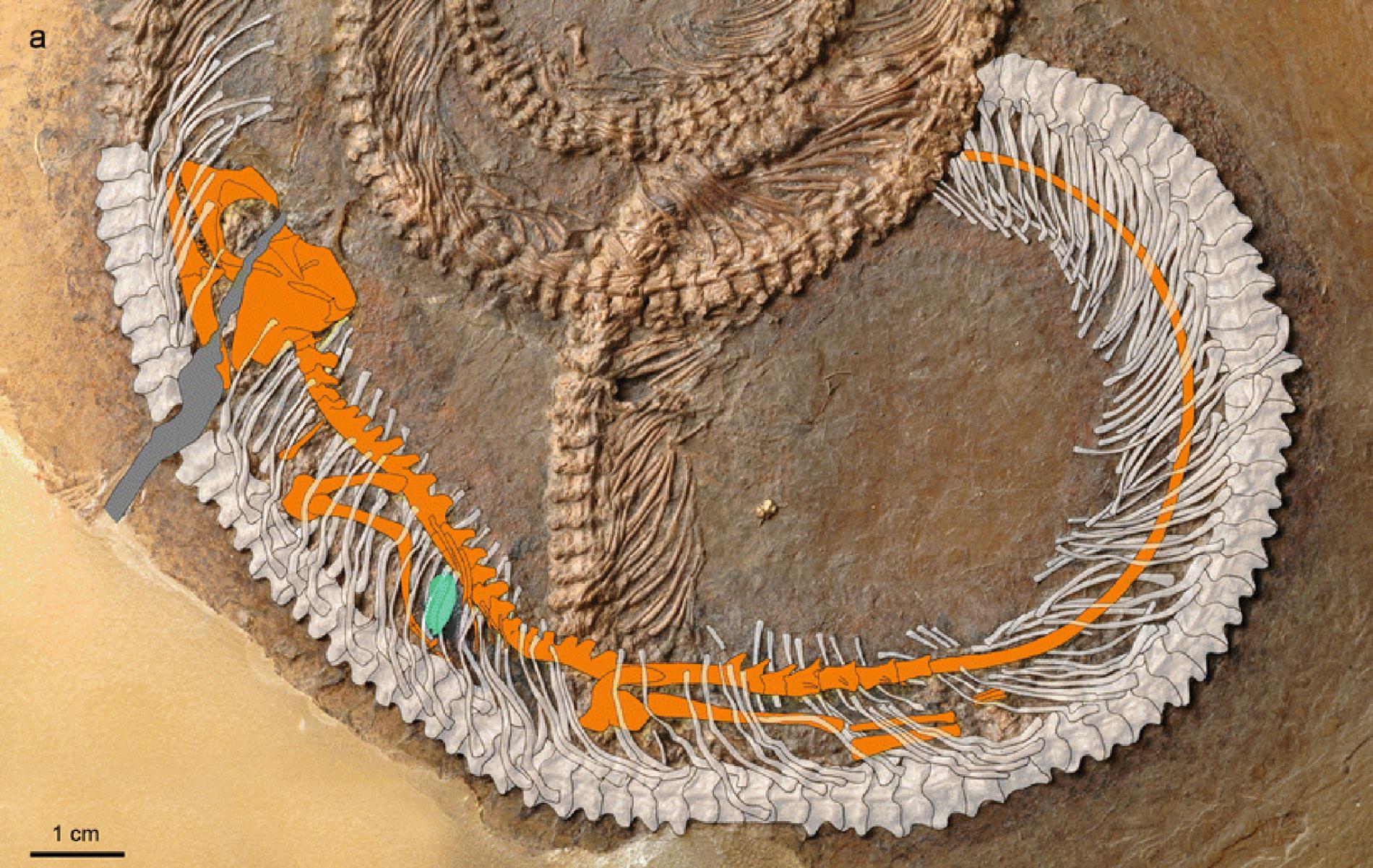Everyone knows fossils can be preserved bones or footprints. Sometimes, though, they come in the form of a bug within a lizard within a snake, all perfectly petrified in a volcanic lake.
About 48 million years ago, an ancient iguana was chillin’, maxin’, relaxin’ all cool one day in prehistoric Germany. It had just managed to find a colorful insect for lunch. Unfortunately, the innocent lizard was eating its last meal.
That moment, a young Palaeopython fischeri snake struck. The tree-dwelling snake slithered out from the shadows, reared its head and lunged, managing to grab a two-for-one special and nom on both the lizard and its lunch.

Photo Credit: National Geographic
Unfortunately, Google Maps didn’t exist back then. If it had, perhaps the snake wouldn’t have fallen into the Messel Pit, a formerly active volcanic lake spewing out sulfur and carbon dioxides. The snake was not alone – many poor creatures inhaled the deadly gases, were overcome by the fumes, and died in the oxygen-deprived waters.
The Journal of Palaeobiodiversity and Palaeoenvironments published a study describing the bug, the lizard, and the snake in detail. The paper’s co-author Krister Smith was amazed with the find:
“It’s probably the kind of fossil that I will go the rest of my professional life without ever encountering again, such is the rarity of these things,” he told National Geographic. “It was pure astonishment.”

Photo Credit: National Geographic
The Inception meal-within-a-meal feature wasn’t immediately obvious at first glance – powerful CT scans revealed the truth. The iguana-like lizard was successfully identified, but the bug’s species designation remains a mystery. Either way, it’s a completely mind-blowing fossil that reveals a never before verified ancient food chain of predators and their prey.






